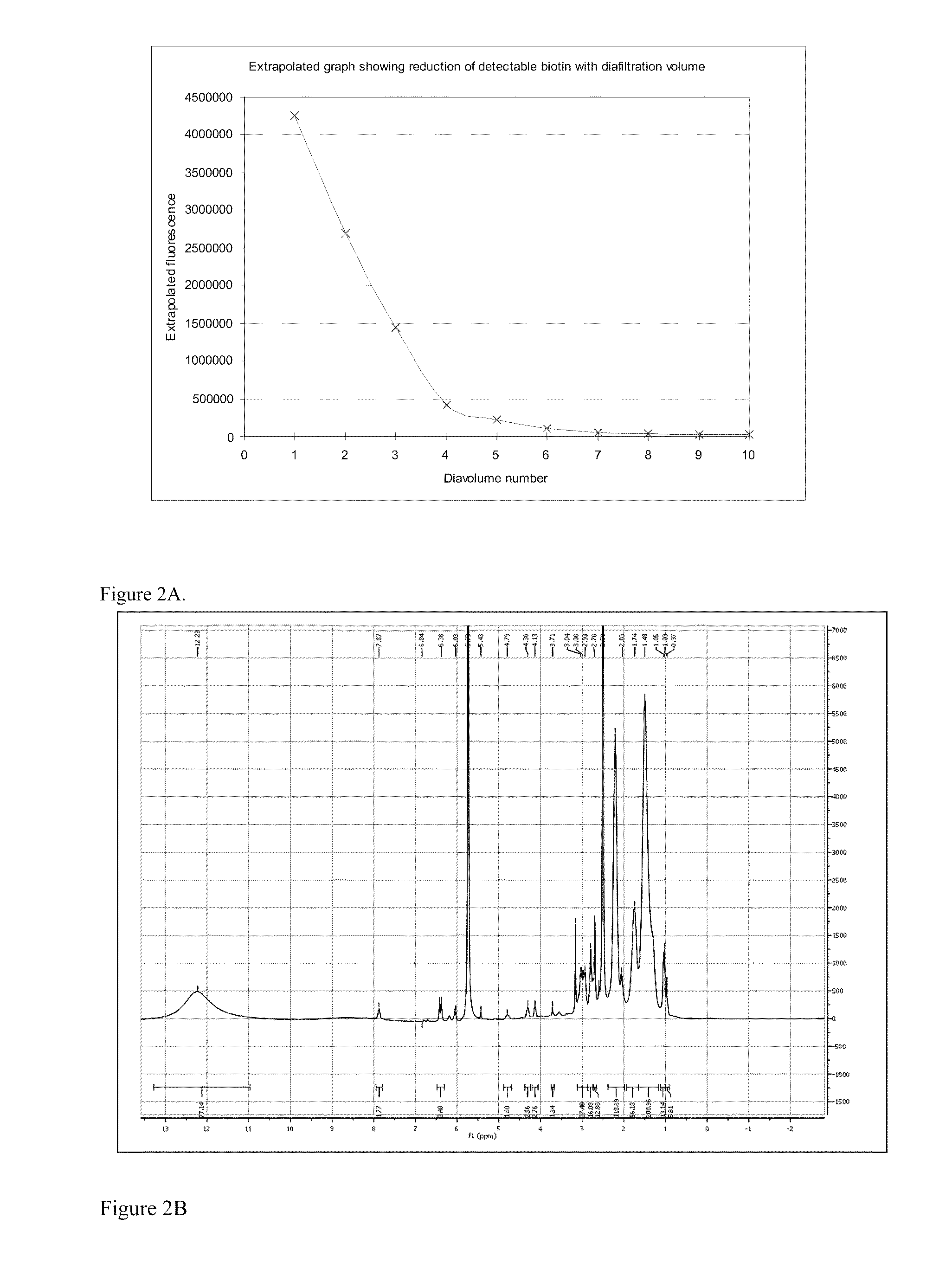Compositions and Methods for Maintenance of Fluid Conducting and Containment Systems
- Summary
- Abstract
- Description
- Claims
- Application Information
AI Technical Summary
Benefits of technology
Problems solved by technology
Method used
Image
Examples
example 1
Coupling of Biotin to a Polymeric Scale Inhibitor
[0126]In order to produce a treatment composition comprising a label and treatment substance according to the invention, the coupling of biotin to a polymeric scale inhibitor was investigated. In one example, an amide bond is formed between biotin ethylenediamine and carboxylic acid-containing polymeric scale inhibitor, using EDC chemistries. This reaction may be performed by those skilled in the art. 1-Ethyl-3-[3-dimethylaminopropyl]carbodiimide hydrochloride (EDC or EDC) is the main water-soluble carbodiimide available and is used to couple carboxyl groups to primary amines. EDC reacts with a carboxyl to form an amine-reactive O-acylisourea intermediate. In the presence of biotin ethylenediamine an amide bond is formed between the carboxylic acid-containing treatment chemical and biotin label. NHS (defined below) is added to stabilize the intermediate increasing the efficiency of the coupling. The small molecule marker used was biot...
example 2
Scale Inhibiting Activity of Labeled Scale Inhibitors
[0164]The scale-inhibitor activity of labeled scale inhibitors was determined using static bottle tests (barite). This test is used to assess how efficient the chemicals are at inhibiting scale build-up compared with the unlabeled original chemicals. Inhibitors, labeled or unlabeled, were analysed in duplicate in 50:50 Forties Formation Water: Seawater at 95° C., tested after a 22-hour incubation. Solutions are dosed with inhibitor and incubated. Undosed solutions serve to provide a ‘base-line’ scaling potential of the water system. After incubation, the aliquots are sampled and the concentration of the scaling cations of interest in each sample is determined by ICP-OES (inductively coupled plasma-optical emission spectrometer). This analysis method is known by the one skilled in the art of detecting, identifying and / or quantifying single chemical elements. Results from one such test are shown in FIG. 3. They indicate that decreas...
example 3
Limits of Detection of an Exemplary Labelling Molecule
[0165]Where the label in question is added during production of the treatment substance, for example during copolymerisation of polymeric scale inhibitors, more label molecules may be incorporated if it is desired to increase the detectability of the conjugate on addition of the associated biomacromolecule. Conversely, if the signal created on addition of the biomacromolecule is excessive and difficult to measure, the amount of label may be reduced. The limits of detection of the labels range from a concentration of 1 part per billion to parts per million. For treatment substance-label conjugates to be useful they need to be able to be detected at very low levels. Continuously injected scale inhibitors are typically loaded into the wells at 5-500 ppm. For squeeze treatments, the inhibitors may be resqueezed when the inhibitor reaches 1 ppm. Therefore, the limit of detection of modified treatment substances will ideally be below 1...
PUM
 Login to View More
Login to View More Abstract
Description
Claims
Application Information
 Login to View More
Login to View More - R&D
- Intellectual Property
- Life Sciences
- Materials
- Tech Scout
- Unparalleled Data Quality
- Higher Quality Content
- 60% Fewer Hallucinations
Browse by: Latest US Patents, China's latest patents, Technical Efficacy Thesaurus, Application Domain, Technology Topic, Popular Technical Reports.
© 2025 PatSnap. All rights reserved.Legal|Privacy policy|Modern Slavery Act Transparency Statement|Sitemap|About US| Contact US: help@patsnap.com



